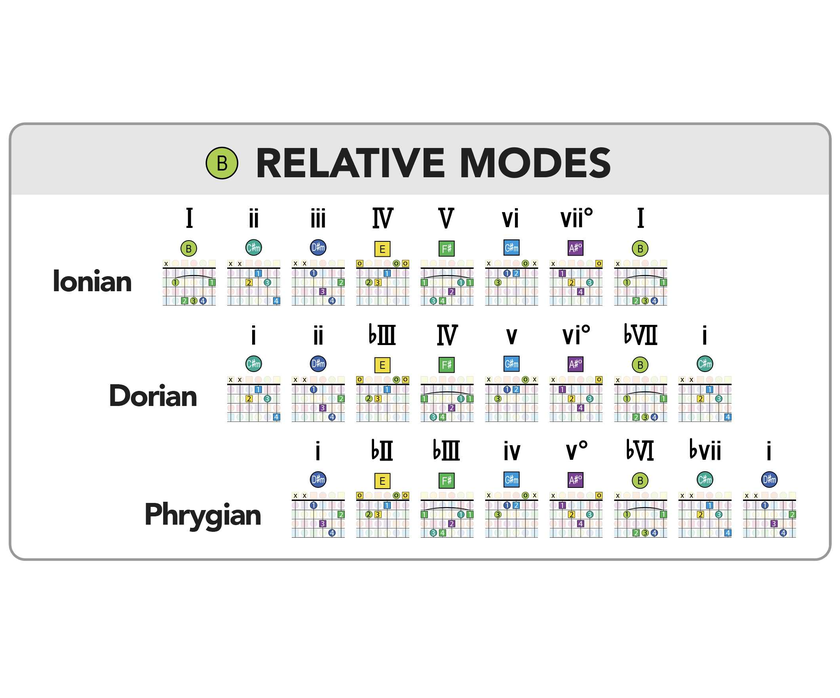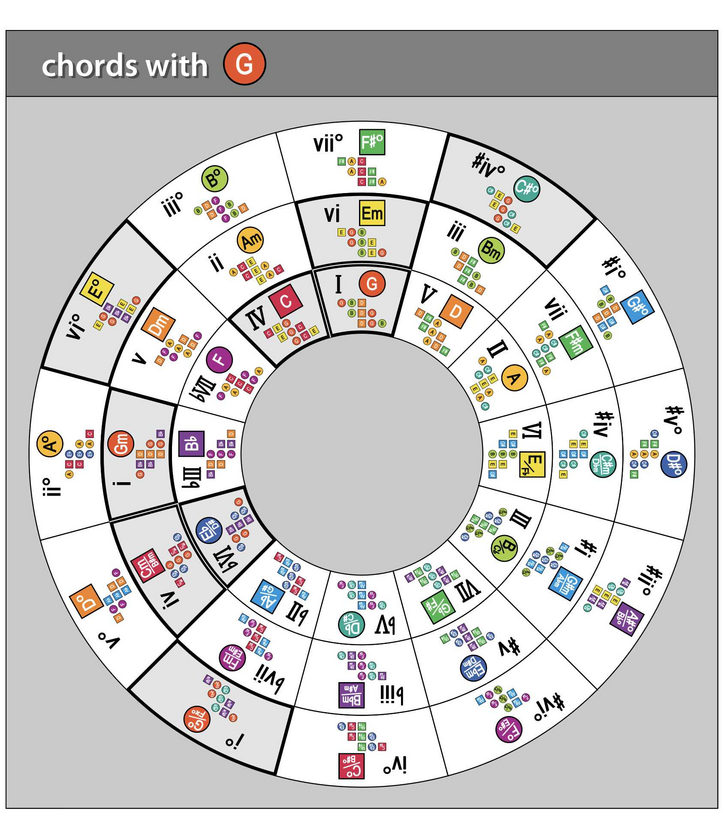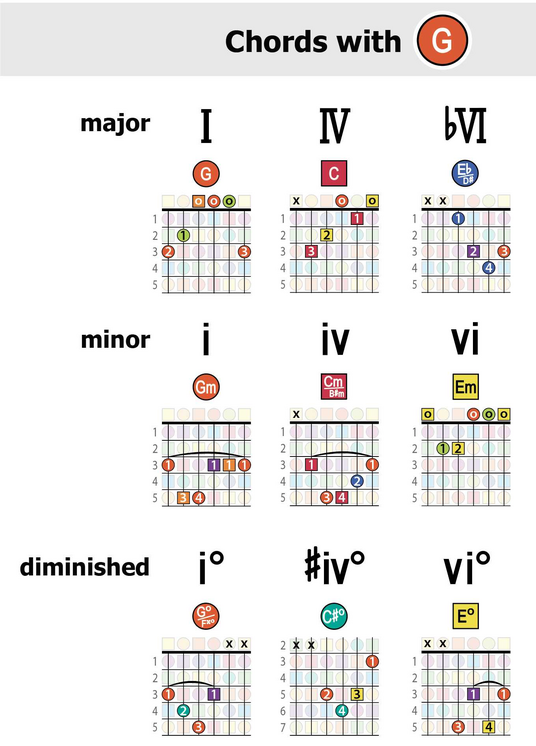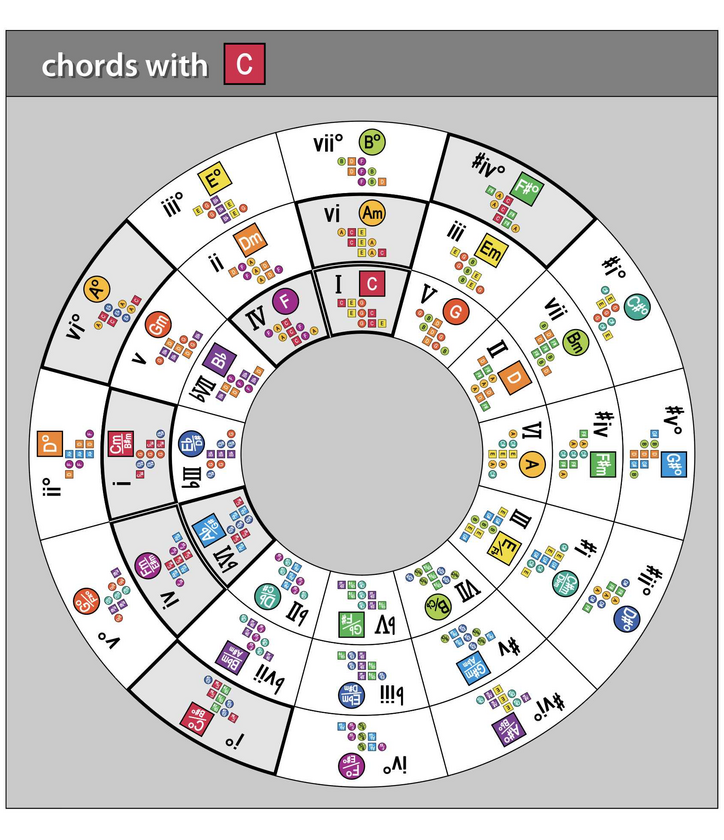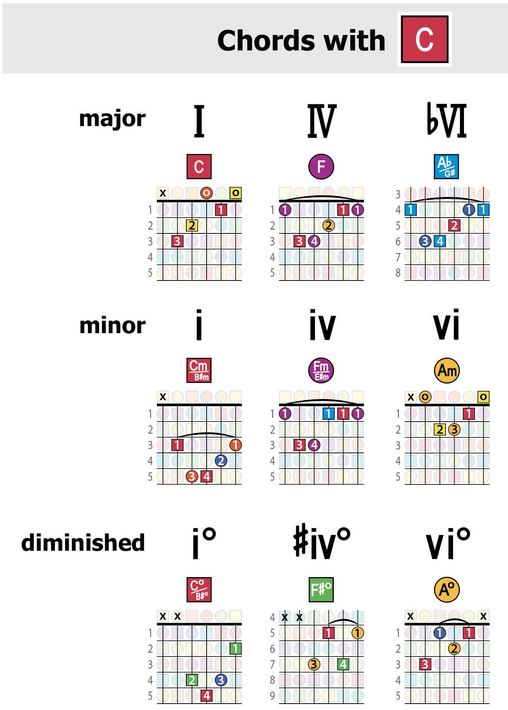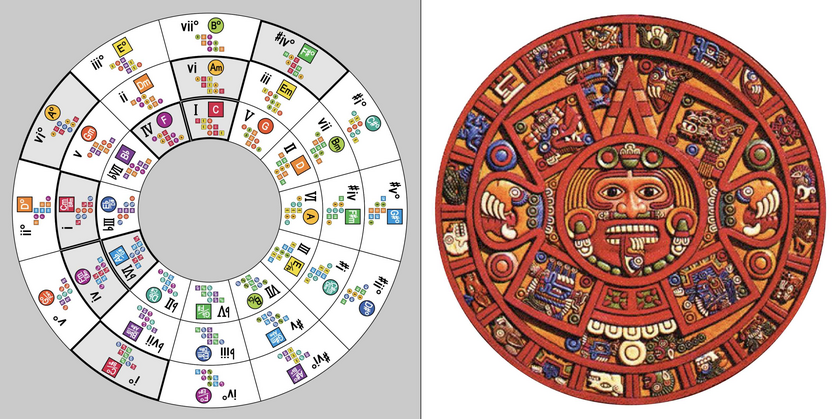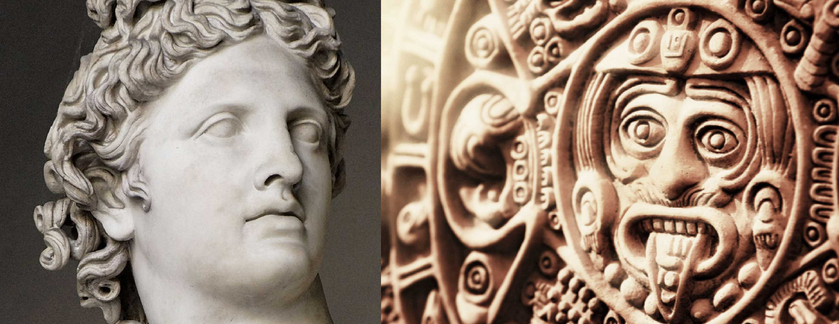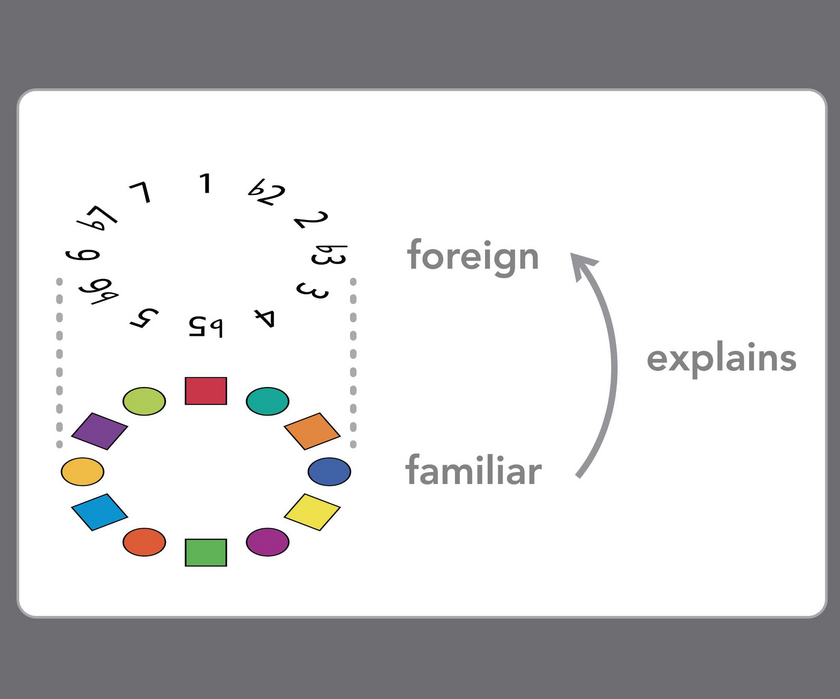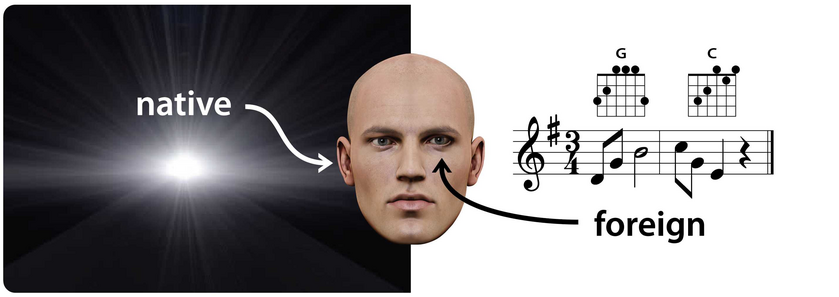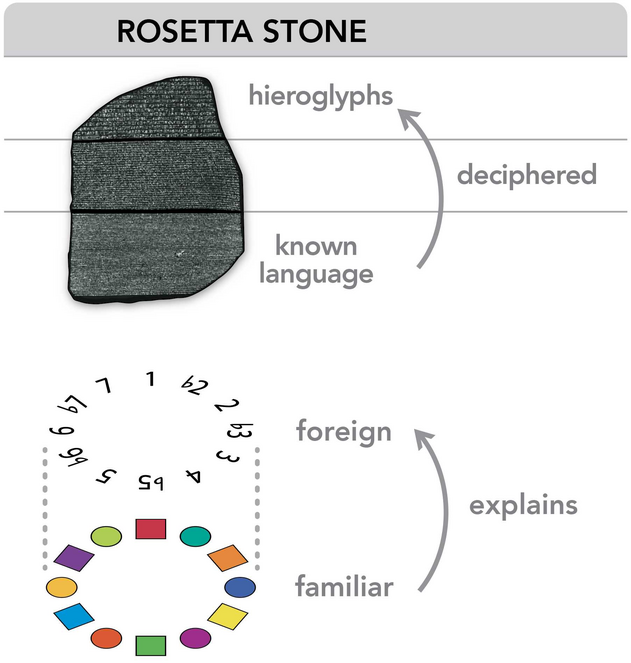Earlier posts look at how to form and play different permutations (or "modes") of a key.
These principles apply to any key, including the key of B, as we'll explore here. When you take the 7 notes of the B major scale -- B, C#, D#, E, F#, G#, A#, B -- you create 7 modes starting on each respective note.

Each pattern is a distinct sound because each mode begins and ends on a different note (or "tonic"). In this example, the tonic of B Ionian is B ... while the tonic of C# Dorian is C# ... and so on.
Each sequence of notes sounds nice. But they sound especially good when played as chords -- like these chords of B Ionian (a.k.a., B major): The B Ionian mode sounds good fleshed out as harmonies because it's really just the major scale pattern. And just like the notes, these same 7 chords can also be arranged into 7 permutations -- like these three patterns, for example:
The B Ionian mode sounds good fleshed out as harmonies because it's really just the major scale pattern. And just like the notes, these same 7 chords can also be arranged into 7 permutations -- like these three patterns, for example:
 And the same idea applies to all of the other chords in this key, as you can see here....
And the same idea applies to all of the other chords in this key, as you can see here....
